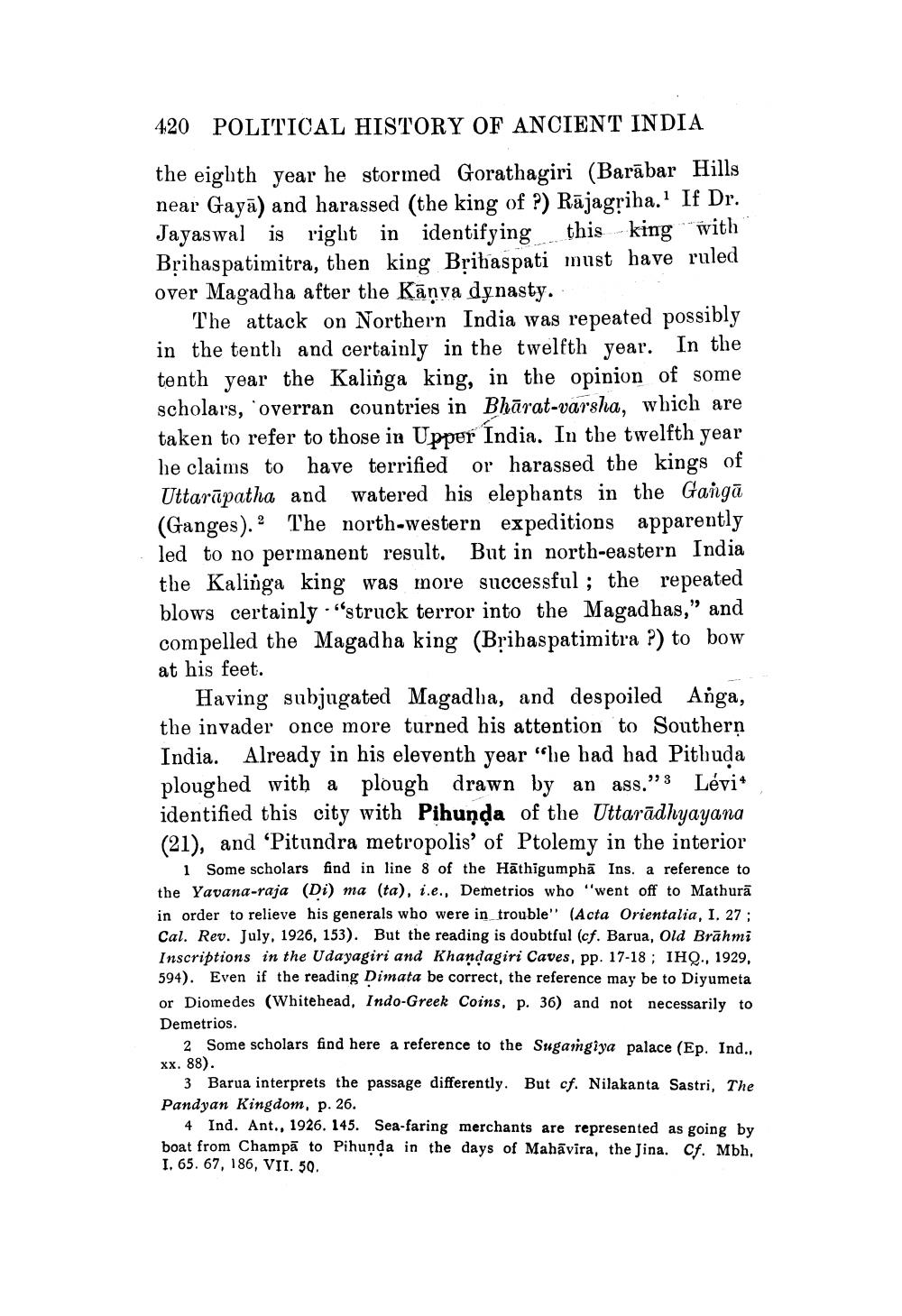________________
420 POLITICAL HISTORY OF ANCIENT INDIA the eighth year he stormed Gorathagiri (Barābar Hills near Gayā) and harassed (the king of ?) Rājagriha.? If Dr. Jayaswal is right in identifying this king with Bșihaspatimitra, then king Brihaspati must have ruled over Magadha after the Kāņva dynasty.
The attack on Northern India was repeated possibly in the tenth and certainly in the twelfth year. In the tenth year the Kalinga king, in the opinion of some scholars, 'overran countries in Bhārat-varsha, which are taken to refer to those in Upper India. In the twelfth year he claims to have terrified or harassed the kings of Uttarūpatha and watered his elephants in the Gangā (Ganges). 2 The north-western expeditions apparently led to no permanent result. But in north-eastern India the Kalinga king was more successful ; the repeated blows certainly."struck terror into the Magadhas," and compelled the Magadha king (Brihaspatimitra ?) to bow at his feet.
Having subjugated Magadha, and despoiled Anga, the invader once more turned his attention to Southern India. Already in his eleventh year "he had had Pithuda ploughed with a plough drawn by an ass."3 Lévi* identified this city with Pihunda of the Uttarādhyayana (21), and "Pitundra metropolis' of Ptolemy in the interior
1 Some scholars find in line 8 of the Hāthīgumphā Ins. a reference to the Yavana-raja (Di) ma (ta), i.e., Demetrios who "went off to Mathurā in order to relieve his generals who were in trouble (Acta Orientalia, I. 27; Cal. Rev. July, 1926, 153). But the reading is doubtful (cf. Barua, old Brāhmi Inscriptions in the Udayagiri and Khandagiri Caves, pp. 17-18; IHQ., 1929, 594). Even if the reading Dimata be correct, the reference may be to Diyumeta or Diomedes (Whitehead, Indo-Greek Coins, p. 36) and not necessarily to Demetrios.
2 Some scholars find here a reference to the Sugamgiya palace (Ep. Ind. xx. 88).
3 Barua interprets the passage differently. But cf. Nilakanta Sastri, The Pandyan Kingdom, p. 26.
4 Ind. Ant., 1926. 145. Sea-faring merchants are represented as going by boat from Champā to Pihunda in the days of Mahāvira, the Jina. Cf. Mbh, I. 65. 67, 186, VII. 50.




